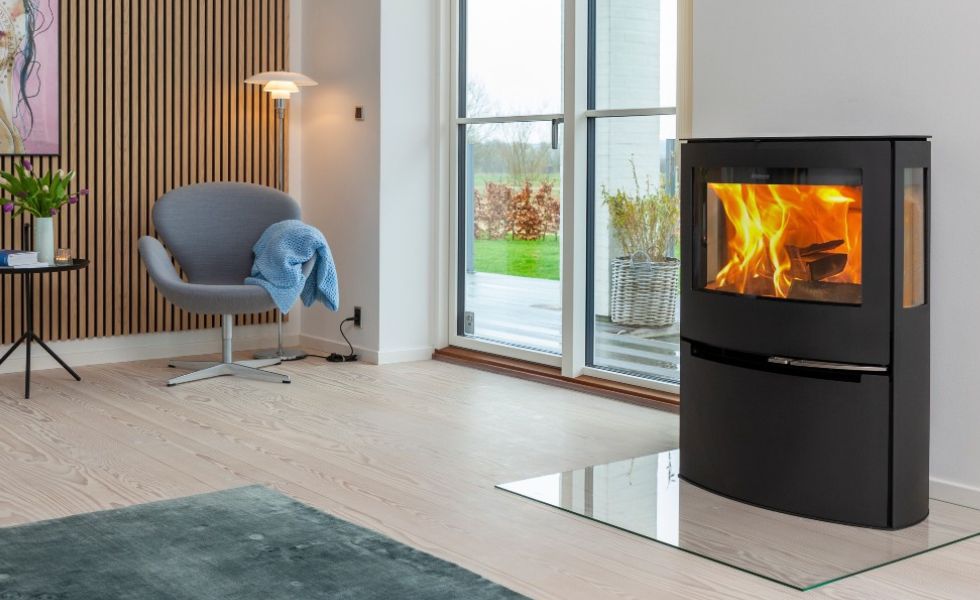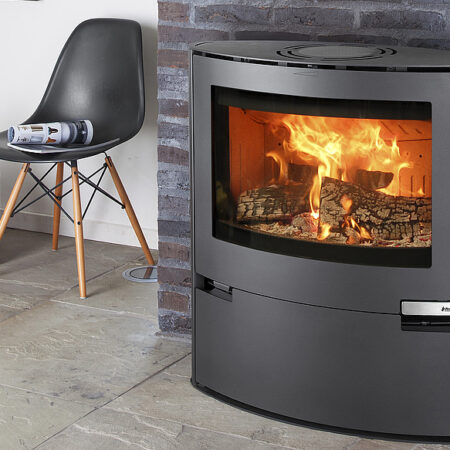We don’t have to go far back in time before traditional stoves didn’t have any glass and the only view you got of the flames was when you opened the iron door to put more wood on the fire.
Later, the stoves got the classically framed glass in the door which was made of heat resistant glass ceramics.
Flat, curved, or with an angle?
Today, the glass has become an important element in the wood burning stove’s aesthetic expression and design. You have to have the sensation that there’s a bonfire in the living room. Big glass surfaces provide maximum view of the flames from several sides which many people want. This places high demands on the production of wood burning stove glass which needs to withstand high temperatures and meet all functional requirements.
Thanks to technology, it’s possible to move away from flat glass to curved glass and glass with an angle. Expression, form and colour have become parameters which matter when choosing a wood burning stove.
The glass helps for a better combustion
Apart from having a design-wise function the stove glass also maintains a high stove temperature and this way ensures a better combustion. If you fire in an open fireplace 60-80 % of the heat disappears directly into the chimney. In comparison, a good, closed wood burning stove with a glass section will provide at least 75 % more heat to your home.
At the same time, the glass ensures that the room which surrounds the stove will be heated more slowly and more comfortably than with open fireplaces. Most glass sections in modern wood burning stoves do also have a surface treatment which helps to keep the glass clean.
Glass provides security
The ceramic glass must be able to withstand heat of up to 1200 degrees inside the fire box while the living room temperature on the other side is around 22 degrees without the glass cracking.
That is why the glass is essential for safety around the stove, allowing you to get close to it and enjoy the flames without the risk of flying sparks.




